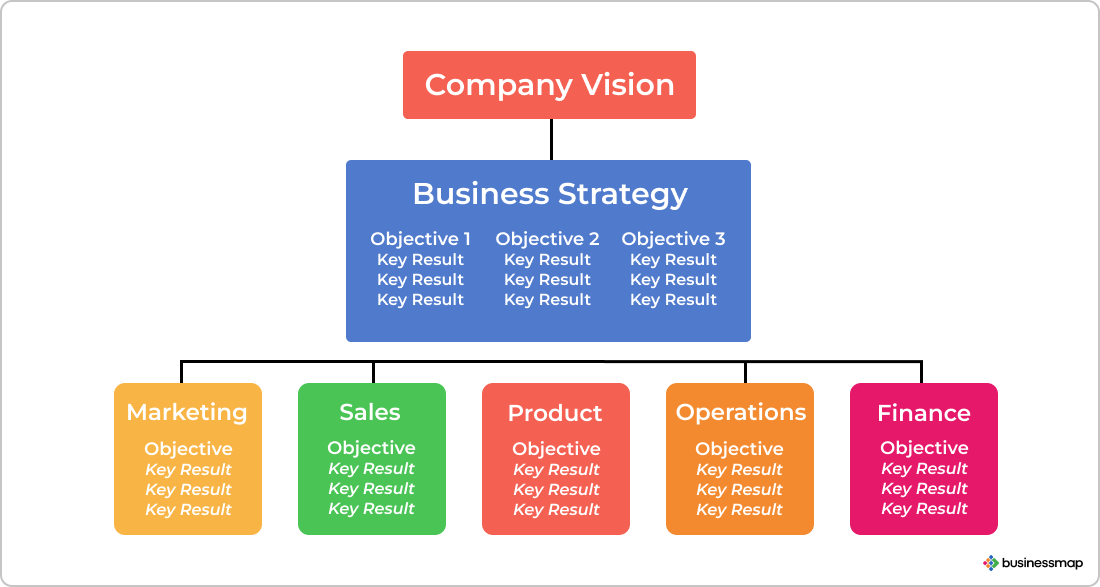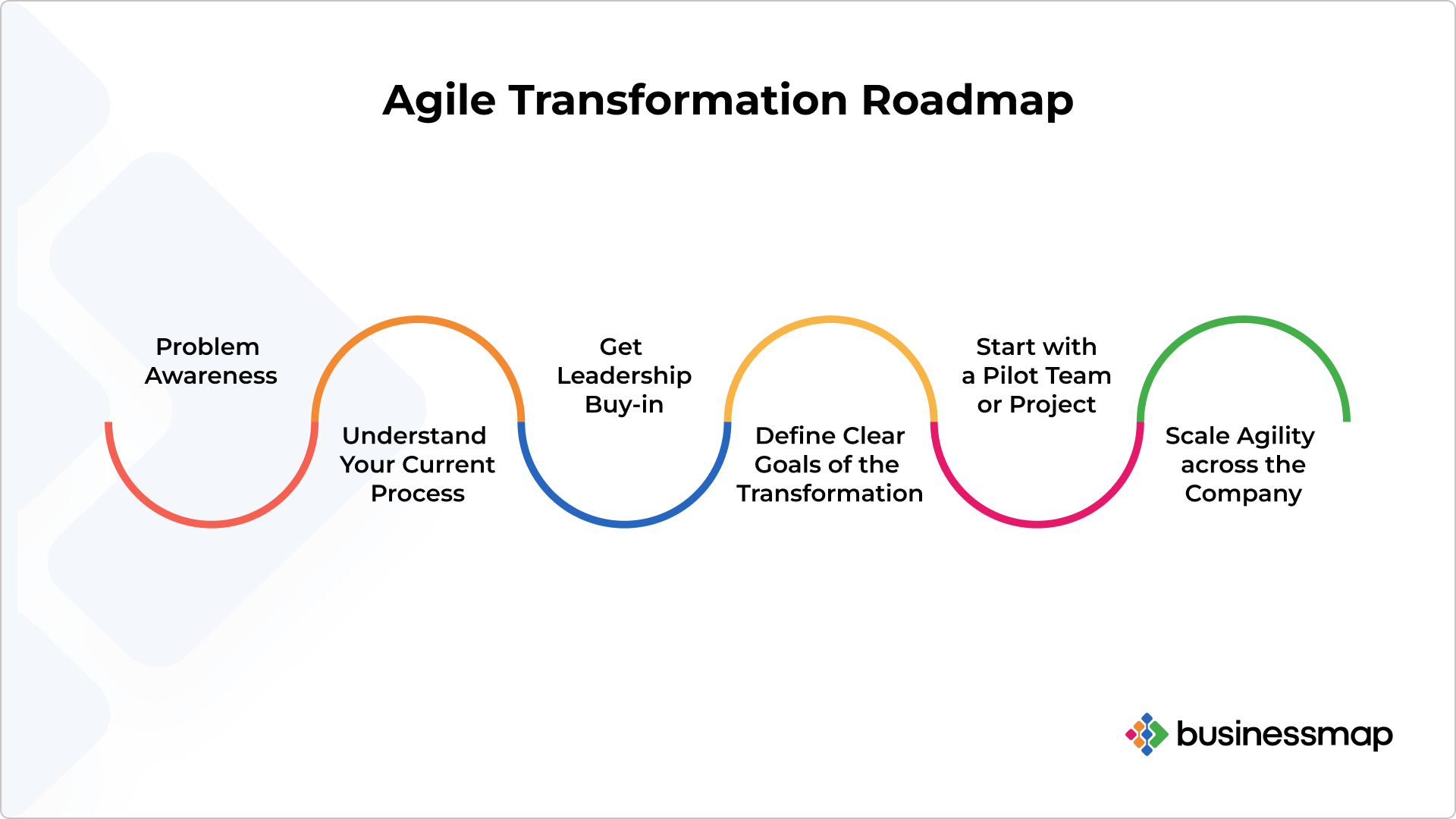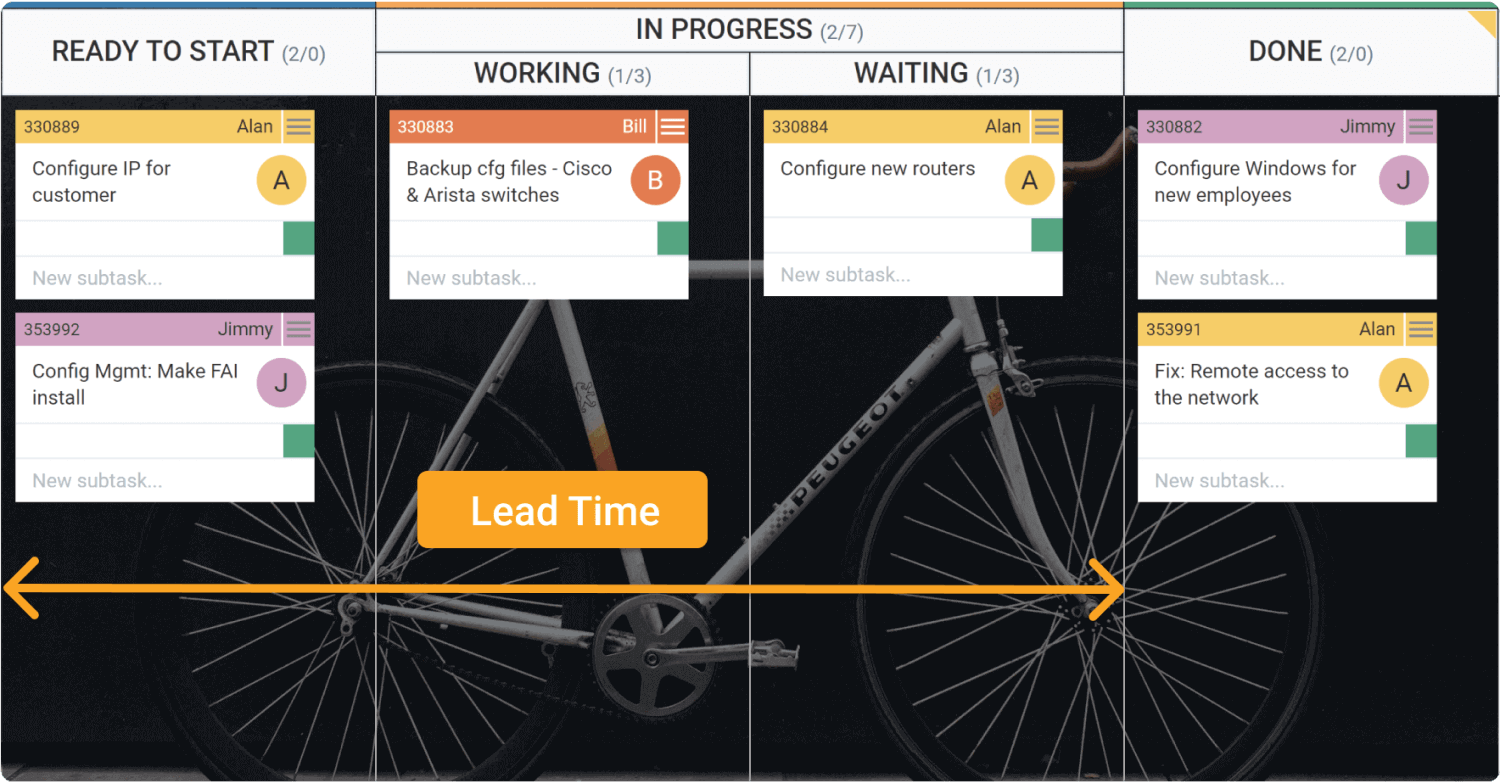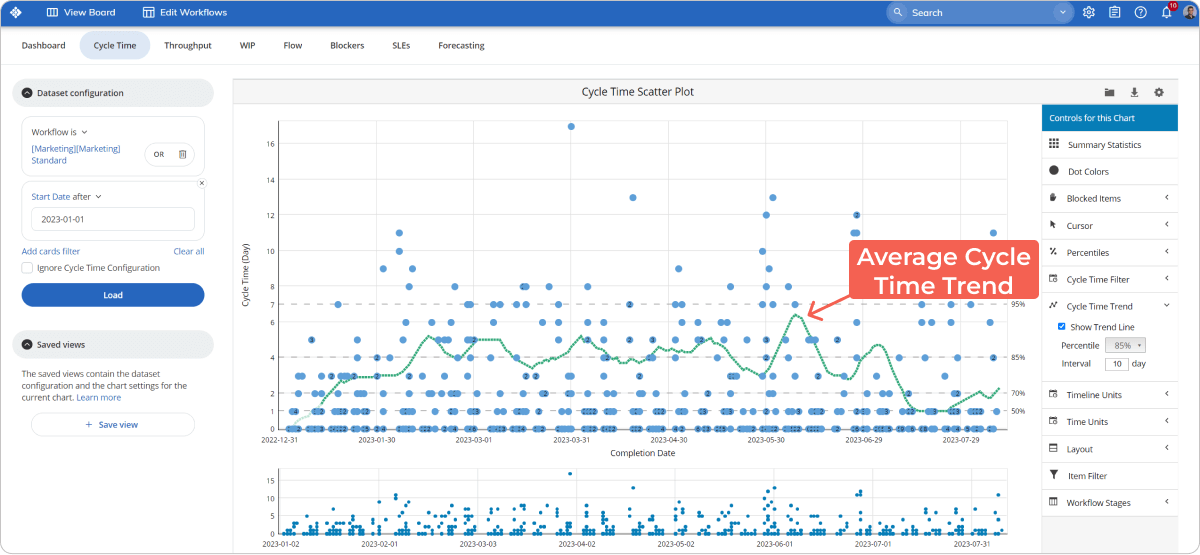An Agile transformation roadmap captures the steps an organization takes on its transition toward embracing the Agile ways of working. Since every transformation takes an individual approach, there can’t be a universal guide to completing an Agile transition.
That being said, there are six critical points every transformation strategy includes:
- Identifying the problem that you need to address.
- Mapping the way value is created.
- Getting leadership support.
- Defining North Star goals.
- Starting with a pilot team or project.
- Scaling Agile across the organization.
Let’s get an in-depth view of each step.
1. Define the Problem. Adopt the Agile Mindset.
Every Agile transformation should start by understanding the real issues that need to be addressed. Make sure you clearly define the "WHY" behind any wide-scale transformation. You need to really dig into the real problems your organization is struggling with instead of applying Agile just because everybody else is doing it.
Perhaps you want to be faster, you’ve got tight deadlines, and you need to get more work done. In other words, you want to increase the time-to-market. Your problem would seem to be speed, and that’s why you think “becoming Agile” would help you on your mission.
Implementing an Agile framework comes to mind as an immediate solution. Instead of putting all your hopes into a specific Agile framework or a method, step back and start with the right mindset. Understand the logic behind the Agile principles and adjust them to work in your scenario.
A crucial step is ensuring your culture promotes knowledge sharing, autonomy, and people-centricity. It may not be a shortcut to cut your delivery times, but it sure is a long-lasting way to improve your efficiency.
2. Start with What You Do Now: Evolution vs. Revolution.
Agile transformation is an evolving and collaborative process. Think of the transition as an evolutionary journey instead of a big-bang implementation. The goal is not just to have the management on board but continuously show how the transformation benefits those who are actually doing the work.
In other words, start with what you do now and experiment with different approaches. From defining the pain points to reflecting on the progress and learning from accumulated data, each transition should resolve at its own natural pace.
“You can’t optimize a system you don’t fully understand.”
Nigel Turlow, co-creator of The Flow System, creator of Scrum The Toyota Way
Mapping out your work process as it currently is a good first step for unraveling where you stand. A good practice to help you with this is visualizing how value is created in your process step by step. By doing so, you not only create a common understanding of the system and the potential bottlenecks in your process. You also invite everyone to relate to that process and smooth out any change resistance that may be obstructing the success of your Agile transformation.
 Visualizing an end-to-end value creation process
Visualizing an end-to-end value creation process
3. Get Leadership Buy-in.
Regardless if you’ve identified a single team that would undergo the transition or it would be a full-blown enterprise-level initiative, getting your leadership on board is critical. It is important for leaders to be aware of how agility can impact business results and how to measure those results. Or, more specifically, how can Agile help the business solve problems and reduce our cost or time-to-market?
Strong leaders are knowledgeable about Agile thinking and eager to share that logic across teams. Their sense of purpose and commitment to the transition should drive the process from vision to reality. On the flip side, lack of leadership participation and insufficient knowledge about Agile are still the top concerns in adopting agility in 2022 (source: 16th State of Agile Report).
4. Set the North Stars of Your Agile Transformation.
A strong vision and commitment to the entire transition can make all the difference between an attempt to improve and a successful Agile transformation. Leadership is crucial in setting and taking that vision across the organization.
To achieve that company-wide recognition, Agile leaders need to make transformational goals transparent and easily shared. A successful Agile transition requires an authentic leader who communicates these goals continuously across teams, gathers improvement ideas, and is self-aware.
One way to implement goals in reality and track the progress toward your "north stars" is the concept of Objectives & Key Results. OKRs can help Agile leaders enable clear communication of a strategic vision, alignment between strategy and execution, and measuring progress.
 Cascading company vision into objectives and key results
Cascading company vision into objectives and key results
5. Start with a Pilot Team.
Enterprise-level Agile transformations can be overwhelmingly large initiatives that require efficient communication of the initiative goals, to say the least. A pilot cross-team, for instance, is a go-to solution to “test-run” Agile transformation before making it a wide-scale project.
A pilot team is usually supported by Agile coaches and consultants. They work relentlessly to expand the understanding of Agile and the effects agility can have on team culture, processes, and value delivery.
A successful Agile implementation within a single team or project can uncover the challenges of the transition process and key insights. Analyzing its effects can get buy-in for scaling Agile vertically and horizontally inside the company.
6. Scale Agile Across the Organization.
Organizational agility is not a one-time goal but rather a behavior, a mindset, and a way of conducting business. Considering that, an Agile transformation should occur in all directions. Bottom-up and top-down transitions are necessary to scale Agile culture across the company.
Besides the role models of the leadership team, engaging in events promoting Agile values and benefits can aid the transformation process. Keep the conversation about agility alive and vibrant. As a result, the maturity of your Agile transformation would expand until it becomes a way of working, thinking, and even living.
 Agile transformation roadmap example
Agile transformation roadmap example
Agile Transformation Timetable
How long does an Agile transformation take?
Although agility is far bigger than timetables, it’s tempting to time-box an Agile transformation initiative. It can be months or years before people start to self-organize, collaborate openly, or even stick to your Agile method(s) of choice.
Agile transformations are evolutionary journeys, and they don’t align with the traditional concept of project delivery. A strong commitment to continuous improvement is among the most valuable factors in turning such an initiative into success.
How Do You Measure the Success of an Agile Transformation?
Measuring the success of an Agile transformation is a complex task. However, you can focus on studying your operational efficiency or process predictability. Asking questions such as: “How is our time-to-market affected by the initiative?” can help you narrow down an answer.
To understand better your operational agility and efficiency, gathering data is extremely important. You will know better if you are making a difference, what areas you currently lack, and how you can improve.
Analyzing how work flows through your system by investigating the lead time of your work process, for instance, will help you understand how long it takes you to complete work. The information can give you firm directions on where you need to optimize to improve your team’s delivery times.
 Visualization of lead time on a Kanban board
Visualization of lead time on a Kanban board
Accumulation and analysis of data are the foundation of a predictable Agile process. Inspecting the fluctuations of the cycle times can unlock insights into your team’s performance over time. Knowing how long it takes you to complete a given amount of work can affect your project delivery forecasts, so you never have to estimate again blindly.
 Visualization of cycle time and cycle time trend
Visualization of cycle time and cycle time trend
No matter what metrics you choose to use to measure the success of your Agile endeavor, reflecting on your progress is a critical element of the entire transformation. Continuous improvement is Agile’s backbone to survivability and change resistance. It's a matter of learning from observations and continuously adapting.
We offer the most flexible software platform
for outcome-driven enterprise agility.
In Summary
Every Agile transformation process starts somewhere – be it a single team, a division, or at the organizational level. There is no universal approach you can apply and be certain you’d achieve your goals. However, there are six critical steps each transition entails:
- Identifying the problem that you need to address.
- Mapping the current work processes to understand them better.
- Getting leadership buy-in.
- Defining North Star goals.
- Starting with a pilot team or project.
- Scaling agility across the organization.





 Visualizing an end-to-end value creation process
Visualizing an end-to-end value creation process Cascading company vision into objectives and key results
Cascading company vision into objectives and key results Agile transformation roadmap example
Agile transformation roadmap example  Visualization of lead time on a Kanban board
Visualization of lead time on a Kanban board Visualization of cycle time and cycle time trend
Visualization of cycle time and cycle time trend

